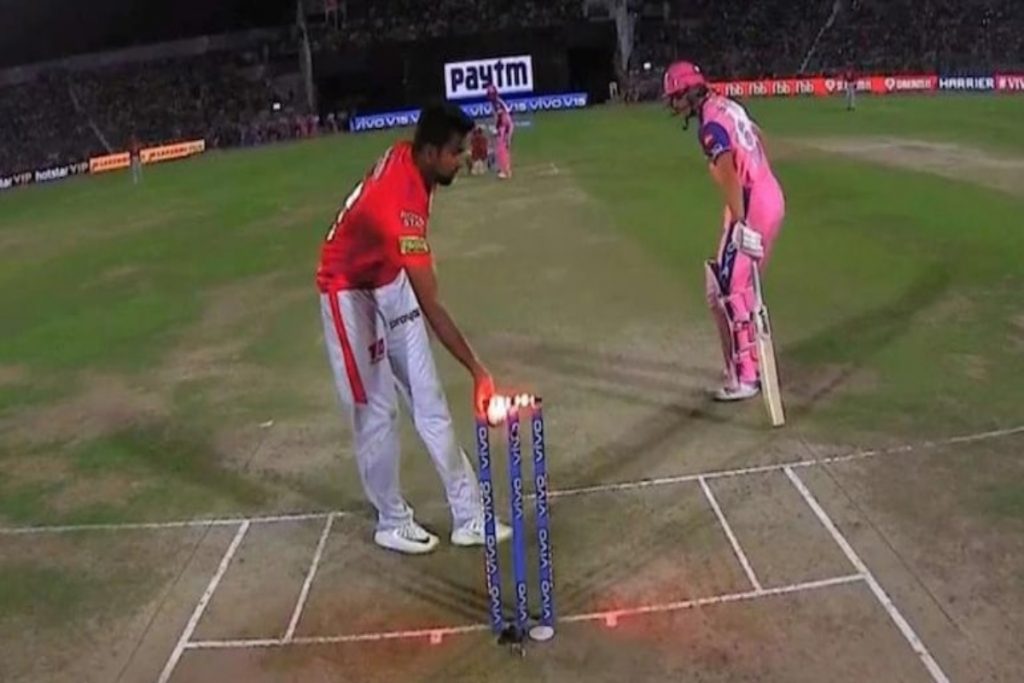New Delhi: Internation Cricket Council has brought up new changes to the playing conditions, which will be applicable from October 1. These changes in rules deal with some issues surrounding cricket in recent times, including saliva-ban, Mankading, slow over-rat and many more. There are a total of eight new rules brought in by ICC, out of which some have been previously seen or talked about.
The recommendations were made by the ICC Cricket Committee led by BCCI President Sourav Ganguly. The changes have been approved by Chief Executive’s Committee (CEC) and are ready to be applied in the games.
These are the following rules that will come into effect the next month:
1. Batters returning when caught
A rule that was seen in the IPL and has been talked about a lot already. From now on, when a batter gets out caught, the new batter coming in will take the strike. This will be regardless of the fact that the batters crossed the pitch prior to the catch or not. This will surely bring in some challenges, especially when a tailender walks in.
2. Use of saliva
The use of saliva to shine the ball was prohibited, taking into consideration the Covid norms. This prohibition has been a part of international cricket for two years now, and ICC has decided to put a permanent ban on the practice of using saliva.
No doubt why we have not witnessed a reverse swing after the saliva ban and now the fielding sides will look for alternatives. No sandpapers but maybe sweat to shine the ball, especially in Test matches.
3. Time for incoming batter
The incoming batter will now be required to take the strike within two minutes in ODIs and Tests while the 90 seconds duration remains unchanged in T20Is.
4. Striker’s right to play ball
Modern-day batting sees batters manoeuvring a lot and now ICC has a rule regarding that too. The batter must have some part of their bat or person to remain within the pitch, otherwise, the ball will be signalled a dead ball. On the other hand, any ball that forces a batter to leave the pitch will also be called no ball.
5. Unfair movement by fielding side
Any unfair or deliberate movement by the fielding side, while the bowler is running to bowl, can result in a penalty now. The umpires can give five runs in favour of the batting side and the ball will be called dead if any such movement is noticed.
6. Throwing towards strikers end before delivery
A bowler cannot throw the ball to get the striker run out if they advance on the pitch to play the ball. Any such throw will be called a dead ball by the umpire. Earlier, this practice was legitimate and a batter could get run out for advancing outside the crease.
7. Mankading
It is a happy day for Ravichandran Ashwin as the practice of Mankading, named after Indian legend Vinoo Mankad, who ran out Australia’s Bill Brown in the 1947 Sydney Test, is now legitimate. Now, if a non-striker advances outside the crease, the bowler can hit the stumps and get them run out. The practice was earlier written in the ‘unfair play’ section by ICC and now has been moved to the ‘run out’ section.
There has been a lot of debate around the same, especially after Ashwin got Jos Buttler run out in the IPL. Now, the new rule might end or spark new debates on it, who knows?
8. Slow over-rate
If a fielding side fails to bowl their overs in a scheduled cessation time, it leads to an extra fielder being brought inside the 30-yard circle for the remaining overs. We have witnessed its impact in the Asia Cup 2022, and now the rule has been extended to ODIs too. This change has been adopted in T20Is and will be applicable to ODIs after the completion of the ICC Men’s Cricket World Cup Super League in 2023.

